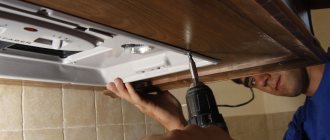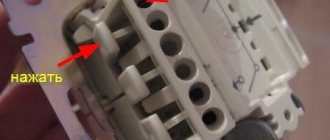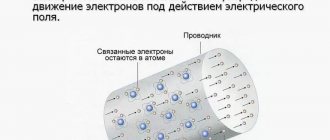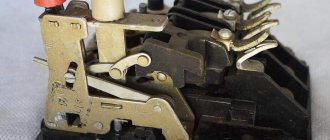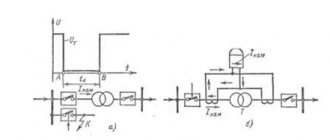How does a microwave oven work?
To make it much easier to troubleshoot problems found in your oven, it is worth familiarizing yourself with its main elements.
The waves are generated thanks to a magnetron, which is connected to the camera by a waveguide. Power is guaranteed by a capacitor and diode. Therefore, it is possible that the microwave does not heat, but works. There is another important element - this is a fuse that protects equipment from unexpected problems. The working chamber is an important part of the appliance in which food is placed to be heated.
To independently cope with equipment repairs when the malfunction is directly related to a defect in a certain element, you need to know the structure of the microwave. The magnetron is connected to the microwave chamber by a waveguide. The magnetron is closed on the camera side with a piece of mica or a plastic cover (this depends on the type of technology chosen). The failure of this component fully explains why the Panasonic microwave oven does not heat food.
In order to obtain high-voltage power, a special additional element (multiplier) was created. It consists of two main parts - a diode and a capacitor. A proven and high-quality fuse helps to avoid unexpected overloads. In addition, the manufacturers have provided one more point - a special lock on the switches makes it impossible to turn on the oven with the door open.
Professionals made sure that it was safe and easy for each user to reheat cooked food. But sometimes, for some reason, modern microswitches become damaged and no longer cope with their tasks, as a result of which the disk spins, but the microwave does not heat. It is important to constantly monitor this in order to avoid additional difficulties.
Specific commands are clearly visible on the device's convenient panel. The selection is made using special switches. Digital control is carried out using buttons; certain models have an easy-to-use touch panel.
The microwave is humming: check the capacitor
Replacing capacitors and resoldering contacts is quite feasible at home. However, if all of the above has been replaced and is working properly, contact a professional.
If the microwave has stopped heating food properly and is making an uncharacteristic hum, then the reason may be the following:
- Diode failure. Its task is to direct the current in one direction. If a part fails, the microwave begins to buzz and the food does not heat.
- A faulty capacitor causes waves to appear and the device hums.
- Failure of the magnetron can cause buzzing and humming.
High voltage diode
Diode testing is almost never carried out due to its complexity. If it is assumed that the diode caused the device to malfunction, then it is easier to replace it. The test is carried out either by a hum when turned on, or by a blown fuse, or by a capacitor that does not heat up normally.
If the microwave hums when turned on, it is possible that the capacitor has failed. It's easy to check: connect an ohmmeter and monitor the readings. If the arrow moves, then the capacitor is working; if not, then it is the cause of the breakdown. Please note that replacement or testing occurs only on a charged capacitor.
Magnetron
If all the parts show themselves to be operational, then most likely the problem is in the magnetron. A sign of malfunction is the humming of the microwave when there is no heating. Conduct a visual check for cracks and carbon deposits, measure the values with an ohmmeter. If it is damaged, replace it with one of similar parameters and dimensions.
You decide to heat up a dish, the microwave works, but the temperature of the food does not rise. The reason can be either simple or complex. If the voltage is low, you need to install a stabilizer to correct the situation. Once you determine why the microwave is not heating food, you need to start repairing it.
Even old wiring can explain why the microwave stopped heating and defrosting food. Don't forget about preventive measures. It is extremely important to regularly clean the heat chamber from splashes of grease and food debris. To avoid unpleasant odors, use plastic lids and hoods.
A huge number of reasons why a microwave oven does not heat can be detected and solved quickly and in a timely manner. First of all, you need to prepare some tools in advance - a screwdriver, measuring instruments. These include an ohmmeter - a device that will do an excellent job of diagnosing problems in a microwave oven.
Microwave works but doesn't heat well? Troubleshooting methods:
- Incorrectly marked mode - use the instructions to set the desired command (“warm-up”); turn on the oven for a while and make sure that the food is heating up - the problem is solved.
- Insufficient voltage - take care to install an uninterruptible power supply.
- Problems with the normal functioning of the door - replace parts.
If the microwave oven is no longer in good working order and cannot cope with direct tasks, first refer to the instructions, which contain a list of tips and valuable recommendations on why the oven fails. If you don't find a useful answer, check an item such as voltage. If everything is in order, unplug the oven and check other elements - microswitches.
In some situations, it is impossible to restore a non-working Samsung microwave or a device from another manufacturer. Even troubleshooting a magnetron is too costly a process. It is more rational to purchase new equipment.
There are a number of reasons why the microwave stopped heating and it’s not a matter of broken parts, for example:
- The network voltage has decreased. The operation of the microwave oven, as well as its heating, can be affected by slight decreases of 20V. As a result, the plate will be heated, but there will be no food in the middle of the vessel. The issue of power outages can be resolved in one day: you just need to go to the store and buy a power supply.
- The network is overloaded. If two powerful appliances are running from the same outlet at the same time, an overload occurs. This issue can be resolved by installing another outlet.
- The door is out of order. As a result of a broken latch, the door does not close tightly and the microwave does not heat food or heats it poorly. Here you can try to repair or completely replace the latches.
- Incorrect mode selection. Very often, after defrosting mode, they forget to switch back to microwaves. Defrosting does not heat the food to the required temperature, and you are already about to disassemble the appliance.
We suggest you familiarize yourself with the Products that will help you remove nail polish from clothes.
Often, the microwave works, but does not heat the food due to the fact that the magnetron is out of order. Next on the list will be a capacitor, a fuse, and a transformer also often breaks. The reason for poorly reheated food may be the following:
- the timer or the control unit itself is broken;
- due to breakdown of the transformer and other parts;
- The inverter may be faulty (this only applies to inverter microwaves).
If you find that the microwave oven turns on but does not heat and makes an unusual sound (for example, buzzing), there are 3 explanations for this:
- The diode has become unusable. This part does not allow current to pass in the opposite direction; the current moves only in one direction. If this part fails, the appliance begins to buzz and does not heat the food;
- it's time to change the capacitor. A capacitor failure leads to the generation of waves and the device hums;
- magnetron failure. A defect in this part may also cause a buzzing or humming noise.
If you nevertheless decide to repair the microwave oven yourself, then before watching anything, turn off the device from the network. Be sure to find the instructions, which contain the names of all the parts that are there.
First of all, after removing the cover, you need to make sure that all fuses are working properly. If you see that they have turned black or the thread has burned out, then you just need to replace them. Often there are two fuse parts inside.
When buying a new part, be sure to take the old (burnt out) one. To temporarily solve the situation, it is not recommended to make bugs out of wire. There is a great danger of fire, and the price of a good fuse is no more than 50 rubles.
If the device hums when turned on, there is a possibility that the capacitor has broken. It’s easy to check its serviceability: you need to take an ohmmeter and connect it to the part. If everything is in order, then the ohmmeter needle moves. And if it stops, then the capacitor has failed, and because of this the stove is noisy.
If you notice a burning smell or something crackling inside while the microwave is operating, after watching this video you will understand what’s wrong. It shows how you can repair a microwave oven if it sparks.
There may be several reasons why a microwave oven does not heat well or does not heat at all:
- low voltage in the network (less than 200 V like the LG MS-2021U microwave oven);
- malfunction of power circuits (magnetron, high-voltage transformer, diode and fuse, capacitor);
- problems in the control circuit, the culprits of which are the timer or the control unit. A common problem with a Samsung microwave oven;
- If an inverter microwave oven does not heat, the reason may be due to inverter dysfunction.
In turn, the following phenomena may be the causes of magnetron failure:
- a metal object entering the chamber during microwave operation;
- natural wear and tear (Electrolux built-in microwave ovens often suffer from this, as they break down very quickly);
- Operating a microwave oven idle leads to sparking, which damages the magnetron.
If the Samsung microwave has stopped heating, and when turned on it makes a buzzing or buzzing sound, the problem may be a failure of the high-voltage diode. The normal operation of this electronic element is to allow electrical current to flow in one direction and block it from flowing in the opposite direction. An example of this is the LG MS-2041U microwave oven.
Another culprit for the lack of heating of the microwave oven is a high-voltage capacitor, the operation of which is aimed at accumulating an electric field. If this element fails, then the process of generating microwaves will not occur. A characteristic hum or buzzing sound will come from the camera.
The process of checking and replacing a high-voltage capacitor requires its preliminary discharge, which is mandatory. This is especially true for the LG MS-2042 microwave oven.
Trying to troubleshoot problems yourself is not worth it, since ordinary consumers do not have sufficient knowledge and the necessary tools to carry out diagnostic and repair work correctly.
Along with replacing the faulty part, a good technician will also carry out preventive maintenance so that the microwave will serve you for a very long time.
The technician's visit is paid depending on the distance of the service center from the customer's home - 10 - 20 USD. e. By the way, the Samsung G2739NR microwave oven costs the same amount.
The simple process of replacing parts costs 20 USD. e. And the Samsung MS23F302TAS microwave oven costs about the same.
The cost of parts that may be needed for repairs ranges from $2 to $20. For the same amount you can repair a Panasonic microwave oven.
Why does the microwave not heat food well?
Surely, many people have experienced that the device works, but does not heat the food. Below are the main reasons for this “behavior”.
Common defects
- Most often this happens because the microwave oven door does not close tightly . This is possible due to the length of use. Over time, parts wear out and such a minor malfunction occurs.
- The next reason is large changes in electrical voltage
or when it is too low. - Connecting many high-power devices to one outlet often causes failure.
- Also on the list of the simplest breakdowns is the incorrect choice of operating mode for household appliances.
- Heavy contamination can also contribute to malfunctions of the furnace.
- The unit has several types of fuses, one of them may fail . It is not at all surprising that after this the microwave stopped heating food.
Above, we looked at the most common causes of minor breakdowns, which you can fix yourself.
Complex cases
But unfortunately, there are also problems that can only be corrected by qualified specialists , as well as people who are well versed in technology.
The following are faults of this type. Despite the fact that they are the most difficult to eliminate on your own, we will show you how to do it at home.
- One of them is the failure of the oven timer or control unit; this breakdown most often occurs due to its long or illiterate operation.
- In an inverter-type microwave oven, one of the most well-known breakdowns is the failure of the inverter. It is responsible for saving energy; manufacturers claim that microwaves of this type are better, but breakdowns occur more often.
- If you have a regular microwave, then instead of an inverter, the transformer may fail.
- Failure of the electromagnetic lamp is possible in ovens of any type.
Important! The most unpleasant and “expensive” malfunction is the failure of the magnetron, this is the “heart” of the device, it is with its help that any microwave operates.
Having examined all possible defects and determined which one is related to your device, you can begin repairs. To do this, you need to find out how to fix breakdowns. We will consider them further.
What to do if the microwave does not heat
If you decide to do the repairs yourself, remember that you cannot work with the device connected to the power supply. Follow the instructions and if you have the slightest doubt, it is better to use the services of a specialist.
If possible, you can find training videos on the Internet specifically for your microwave oven model. This will speed up the identification of the problem and reduce the likelihood of the situation getting worse.
The key to proper and, most importantly, long-term operation of a microwave oven is careful operation of the equipment. A foreign object may accidentally enter the camera. You should not heat food in dishes made of metal, this will lead to trouble. To determine why the Bork microwave oven does not work, you need to conduct a comprehensive diagnosis.
We suggest you familiarize yourself with the reason why the water in the washing machine does not heat up
What to do if the microwave heats up but does not spin? It is absolutely not necessary to immediately contact the service center for help. It is necessary to identify the damaged component, and then repair the part or replace it with a new one.
Complex microwave malfunctions: what can break?
The microwave is humming and not heating
If the microwave oven turns on, but does not heat and makes a hum, then:
- The diode may have burned out. This part prevents current from passing in the opposite direction.
- A humming sound may indicate that it is time to replace the capacitor.
- The magnetron may break, which is why the buzzing and humming occurs.
Very important! If you decide to look for reasons and fix it yourself, remember safety precautions. This is one of the most dangerous household appliances.
The danger lies in high voltages. The operating voltage of the magnetron anode is 4–5 kV. High voltage can remain even when the device is turned off from the network. We are talking about capacitors. This is why the risk of electric shock to an inexperienced electrician is high. Therefore, before deciding in favor of DIY repairs, think carefully. An attempt to save a little on paying for the services of a master can result in death.
If you still decide to try to do everything yourself, do not forget about safety precautions. Here are some basic rules:
- Do not touch parts with bare hands, especially while the equipment is operating. Remove parts (fuses or diodes, etc.) with special current-insulated tweezers or a screwdriver with an insulated handle. You need to put “crocodiles” on the probes of measuring instruments.
- To avoid discharging a high-voltage capacitor through the body, short the magnetron leads to the body. Of course, we are talking about work with the equipment turned off. Some furnace models are designed with a special resistor that discharges the capacitor when the power is turned off, but you shouldn’t rely on it, it’s better to be safe.
- Before you begin any repairs yourself, be sure to read the instructions.
Why problems might arise
The microwave is working but the food is not heating, it will be important for you to know that certain factors are often the cause:
- Difficulties arising with the supply voltage: to eliminate the cause, it is worth purchasing a power supply of the specified power.
- Failure of parts - over time, the design stops working correctly, the door does not open well and the dishes do not warm up completely.
- Setting the random mode.
- Presence of unnecessary objects in the chamber.
Constantly monitor the serviceability of the selected microwave oven.
To determine the reasons why the microwave does not heat and is noisy, carry out a comprehensive diagnosis. Start with a visual inspection of the walls of the heat chamber and the power cable. If the microwave does not heat, you need to disassemble the device to check the functionality of the components.
It is important to know that problems in the proper operation of a microwave often lie in its careless use, violation of basic rules and recommendations. As a rule, it is mainly very cheap models that become faulty; their parts wear out quite quickly and easily. Remember that it is the users themselves who are to blame if the microwave oven refuses to heat food properly.
Pay attention to some important points: the fuse has a glass bulb and metal elements. When you see a break in the chain, you need to replace it immediately.
Difficulties with the magnetron - poor quality and untested contacts (due to constant heating). The solution to this problem is simple - restoring contact using special tools. Has the cap turned black? You have to make an effort to clean it carefully. The antenna cap is damaged - carefully inspect the magnetron itself, make sure the element is in good condition. Replace the cap, and, if necessary, the magnetron: the new parts must match the installed ones in terms of power and structural features.
To prevent equipment from being used with the door poorly closed, special small switches are installed. It is important to know that often the reason why a microwave does not heat can be due to defects in the microswitch. This will require urgent replacement of parts.
Always be careful about the rules for using the selected devices. If necessary, contact trained specialists and experienced craftsmen.
The microwave does not heat: simple reasons
There are situations when you put food on to warm up, everything seems to work, but even after a long period of time, the temperature of the food is insufficient or it is completely cold. The reason that the microwave does not heat can be either a serious breakdown or easily fixable reasons. Let's start with the easy one:
- The microwave oven may not heat properly due to low line voltage. For normal operation of the magnetron, 220 V is required. If the voltage is lower, it will work, but the temperature will rise very slowly. The situation is treated by installing a stabilizer. Naturally, it is better at the entrance to a house or apartment, but you can install a small stabilizer only on this equipment.
If your microwave doesn't heat, you'll have to have it repaired.
All other reasons are more serious and must be dealt with separately.
More serious reasons
If the food does not heat up, the microwave oven does not turn on, or some modes stop working, then these are the first signs of serious malfunctions. Why doesn't the microwave heat up? Hardware components come out due to:
- normal wear and tear;
- mechanical damage;
- improper operation of equipment;
- short circuits.
To determine why the microwave beeps but does not heat food, and then fix the problem, you need to buy the appropriate spare parts.
Fuse
If the microwave disc is spinning and the light is on, but the food is not heating, then you should contact a professional. They will help you cope with the situation.
Fuse blown:
- Remove the cover.
- Blown fuses turn black or swell.
- Check resistance.
- Replace parts with proven and high-quality ones.
If the microwave operates but does not heat, disassemble the oven to check the functionality of other parts. It is possible that another component, for example, a magnetron, has broken.
In order to carefully examine the general condition of the fuses, you need to carefully remove the cover, removing the fasteners. The light in the microwave itself does not come on if the mains fuse is faulty. If you do not notice any serious external defects, then take an ohmmeter to check its condition.
You can also pay attention to the condition of the cord and plug itself; they must be of high quality and without damage. This condition must be observed. There is a high-voltage fuse directly under the casing; this should also be checked. The safety of using a microwave oven depends on the reliability and serviceability of the parts.
If the microwave hums but does not heat, this may indicate problems in the magnetron. A malfunction of this part causes the microwave to turn on but not heat well. There is no need to immediately blame the magnetron for everything; this is due to the fact that well-known brands, for example, Samsung, may have problems with the solder joints of the filter coils when the lamp is operating.
You need to know one more rule in order not to make a mistake - the magnetron housing heats up to one hundred and fifty degrees during operation. It is for this reason that when the microwave was turned on, it was necessary to wait until the lamps cooled down. When you have checked everything and the food is not heating in the oven, replace the magnetron.
What is the reason that the microwave does not heat food? If, after a detailed and careful check and replacement of parts, the oven turns on, but does not heat the food, an additional check of the mica plate will be required. A mica plate is necessary to cover the exit of the waveguide directly into the microwave chamber.
Carefully clean the plate from dust, and then carefully, following the rules, put it in place. Please note the following point: if you notice a hole in the plates, replace them as soon as possible. Show responsibility and you will prevent serious troubles from occurring.
This element can be purchased separately in the store without any problems. At the same time, if you purchased a plate from Samsung, but you need a component for Sharp, you will have to make holes for the screws.
What could be the problem if the oven stops heating? Check with a tester to see if the capacitor or diode is broken. When a problem is identified, the parts are changed. Take care of your chosen microwave oven, and then it will delight you for many years with its serviceability and positive characteristics. If problems do appear, then it is necessary to urgently begin to eliminate them.
You can entrust the work to professionals or, if you have experience and relevant knowledge, cope with the tasks yourself. Do not ignore the instructions and instructions for using the purchased equipment. Valuable recommendations will help you prevent unexpected device failure.
Broken multiplier:
- Resistance will indicate a problem.
- Check the diode itself.
- Damage to the magnetron.
We invite you to find out why the machine does not spin automatically
Often, problems of this kind can be eliminated with simple efforts, without outside help: you just need to understand the documentation and replace the part. But this will require patience and careful attention to detail.
When the microwave was turned on, the light began to come on, but the equipment still does not perform specific tasks, under no circumstances should you throw it away, everything can be fixed. The whole point is that you violated certain rules for using the device. Anyone can face this problem. Eliminating defects does not always require special knowledge and skills.
If the microwave breaks down, first use the instructions, as they contain hints from the manufacturer as to why the oven may fail. If a solution is not found, check the voltage, also disconnect the device from the network and check the microswitches.
A multiplier is a part that consists of a diode and a capacitor. The reliability of the capacitor can be checked with an ohmmeter. Here you will need minimal knowledge: you saw that the device’s arrow deviates, then points to infinity, then you can say with complete confidence that everything is in order with the device.
To repair a microwave, you need to check the component with an ohmmeter. If the readings are 0.1 Ohm, everything is fine, you can rest assured.
Restoring the microwave oven in simple ways
A microwave oven (microwave oven) lasts quite a long time if you follow simple operating rules. When these simple rules are violated, then repairing a microwave oven, like any repair of electronic equipment, is quite expensive, and sometimes is not cost-effective compared to purchasing a new device.
The most common cause of malfunction in a microwave oven is a malfunction of the magnetron, which fails when overloaded. Magnetron overloads occur due to excess power dissipated on it. For example, installing a metal tin can or plate with a metal edging in the working chamber usually leads to just such a sad result. Also, you should not turn on an “empty” microwave oven. Sometimes, especially in the case of inexpensive models, this is also fraught with malfunction and subsequent repairs. In these cases, replacing the magnetron, and sometimes also the high-voltage diode, is required. Much less serious consequences are the failure of the plastic (or mica - there may be different options in different ovens) plug in the working chamber, which is a rectangular part, measuring 2.5 x 6 cm, separating the waveguide and magnetron antenna from the working chamber of the furnace, where food is placed to be heated. This plug prevents food particles from getting into the waveguide and the magnetron antenna.
Despite the apparent simplicity of diagnosing a malfunction and its subsequent elimination, experts do not recommend repairing a microwave oven yourself for two main reasons: firstly, you can get an electric shock (since there is a voltage of several kV in the electrical circuit of the magnetron), and secondly, you can be irradiated by a magnetron - an ultrahigh frequency generator. Both are dangerous to your health.
Therefore, I also recommend trusting the repair of microwave ovens to specially trained experienced craftsmen. And in this article we will analyze simple cases when you can save on repairs, because simple faults are diagnosed unambiguously, which allows, subject to increased safety measures, to replace the main elements of the microwave oven - the magnetron and the high-voltage diode, thereby quickly and at minimal cost restoring performance of this popular household device.
Let's look at two common faults and methods for localizing them. The first is a malfunction of the microwave oven, which is expressed in the absence of heating of the working chamber, and the second is a drop in power.
In the first case, it is necessary to replace the magnetron and check the serviceability of the high-voltage diode. Because in practice, the diode often fails when the magnetron malfunctions. A faulty magnetron will look absolutely “like new”, thus, there will be no external signs of its malfunction. It is possible to check its filament, but that’s not all. One simple way is to check the operation of the microwave oven “by ear”. Turn on the oven with a food product pre-installed inside the working chamber (for example, put a pie or a cut glass glass of water filled to 2/3 of its volume). A working furnace will make a steady noise. Crackling, loud sound of “strained operation of the transformer” (the winding of which is also loaded with the magnetron filament power circuit) indicates a malfunction. Immediately turn off the oven and prepare a replacement magnetron.
To establish the high-quality operation of a household microwave oven, use the following, quite common, test. Take 1 liter of water poured into a glass jar, place it in the working chamber, measure the temperature with a high-quality (reliable, proven) digital thermometer (for quick measurements), then turn on the oven for 62 seconds. After heating by microwave waves is completed, stir the water in the jar and measure the temperature again. Based on the temperature difference, determine the power based on the following correspondence: the difference in the TC corresponds to the power of the “defrost mode” of 490 W. By analogy, the difference is 8°C - 560 W, 9°C - 630 W, 10°C - 700 W, 11°C - 770 W, 12°C - 840 W, 13°C - 910 W, 14°C - 980 W, 15°C - 1050 W, 16°C - 1120 W, 17°C - 1200 W.
How to check the magnetron?
The lack of available simple methods for reliably checking the serviceability of magnetrons in microwave ovens creates certain problems during repairs. The method proposed below, although it requires the use of an oscilloscope in high voltage measurement mode. however, I will present it here because it allows you to quickly check the performance of the magnetron and the components of the high-voltage multiplier, in which the main element is a high-voltage diode. The photo at the beginning of the article shows a view of the open housing of a household microwave oven, a view of the magnetron and the magnetron power supply.
The magnetron in the circuit of a household microwave oven is used as one of the voltage doubler diodes. This property allows you to check it as a diode if you have a working standard diode. Alternatively, viewing the voltage waveform at the magnetron cathode with an oscilloscope allows you to obtain information about its performance, problems and power conditions. To do this, use a standard 30 kV high-voltage divider (you can use a homemade high-voltage divider consisting of 3 high-voltage resistors with a resistance of 33 MOhm each and one 30 kOhm, to which the oscilloscope input is connected). The grounding terminal is securely connected to the microwave oven body.
When the microwave oven is turned on, negative half-cycles (50 Hz pulses) with an amplitude of up to 4 kV are observed on the oscilloscope screen. It is appropriate to note that the shape and amplitude of the pulses are influenced by the elements of the high-voltage power source. By changing the shape of the leading edge, one can observe the magnetron entering the operating mode as the filament warms up and the stability of its operation in the active mode. Using an oscilloscope, defective capacitors and high-voltage diodes are identified. When the magnetron is inoperative, a sinusoid with an amplitude of about 2 kV is observed on the screen. By carrying out the described experiment in the form of several control measurements on a known-good microwave, you can obtain the necessary skills for repairing faulty microwave installations. So, to determine the quality of the magnetron, it is enough to turn on the microwave oven through a powerful LATR, reducing its supply voltage by 25...30%. The appearance of a magnetron removed from a faulty household microwave installation is shown in Fig. 1.
Rice. 1
Attention, important!
Of course, when measuring, it is necessary to take into account the presence of high voltage and comply with existing safety standards.
How to diagnose a faulty high voltage diode
A high-voltage diode in a microwave oven can be used in different types; its purpose and operating principle are the same. The diode is usually designated on the board as DB1, and the type itself may have different designations, for example, 10С1В 3000 K S13, Shine 50 Hz 1368, etc. You can replace a high-voltage diode in different microwave ovens with another similar one without any damage to the device. In my practice, I have tested replacing the high-voltage diode with CL01-12, 060TM, HVR-1X, 2X062H, L5KVF. Different manufacturers label such a diode in their own way.
Figure 2 shows a type of high-voltage diode used in modern household microwave ovens.
Rice. 2
According to the electrical characteristics, the high-voltage diode is designed for a current of up to 700 mA at a maximum voltage of up to 5 kV. These parameters also explain the impossibility of its practical testing (“diagnosis”) using conventional multimeters with a maximum resistance measurement limit of 2 MOhm. In this case, the tester shows a “break”. The voltage that unlocks the diode charges the high-voltage capacitor of the microwave oven to the amplitude value. In this case, the voltage on the magnetron is very low compared to the working one. When the voltage polarity changes, the diode is turned off and the total voltage on the winding and capacitor is applied to the magnetron.
To check this high-voltage diode and make sure it is working, you can go in two ways. The first is to check in resistance measurement mode with an ohmmeter with a resistance measurement limit of up to 200 MOhm (it is designed to measure the insulation resistance of wires), the second is to check practically by connecting 100-230 V alternating voltage to the circuit. In domestic conditions, this method is most often used: in compliance with safety rules, one contact of the diode is connected in series to a 230 V electrical circuit (to one of its conductors) and in the mode of measuring direct voltage in the 250 V sub-range (and above), a multimeter measures the voltage between the other conductor (230 V / 50 Hz network ) and another contact of the high-voltage diode. Provided that there is voltage in this case, and the diode was not determined to be short-circuited by a preliminary check with an ohmmeter, its serviceability is recognized.
If the heating power of the microwave oven has dropped, this is noticeable by the weak heating of the food and/or the need to spend noticeably more time on heating, despite the fact that until recently “the oven was heating well.” Of course, this case is not difficult in terms of financial and time costs, and replacement of the magnetron is not necessary. To troubleshoot, consider two ways.
First. We visually check the mica (or plastic) gasket in the working chamber opposite the magnetron waveguide. The gasket (otherwise called a plug) is necessary to protect the magnetron antenna (waveguide) from particles of the heated products themselves getting on them. In principle, burnout of a mica or plastic gasket is a common malfunction of modern microwave ovens. To avoid this problem, the gasket can be additionally painted with special food enamel (from the side of the working chamber of the microwave oven).
Second. We check the supply voltage in the outlet directly at the microwave oven plug. It has been established that even a slight drop in the supply voltage has a very significant effect on the heating power of products in the working chamber. Moreover, all other “attributes” of the microwave oven operation remain unchanged, and the device operates as if normally. So, when the supply voltage decreases to 200 V, the microwave oven loses approximately 50% of its power. This must be taken into account.
When replacing feed-through capacitors from the magnetron fixed in the stove, remove the filter cover. Using a screwdriver, we separate the “common wire” of the capacitors from the filter housing. Using an ohmmeter, we determine whether the capacitors are broken. In practice, repair of feed-through capacitors of the magnetron filament leads can be carried out by destroying the capacitor housing with pliers or wire cutters, and soldering new, known-good capacitors of any type with a capacity of 200 pF and higher at the appropriate operating voltage, then filling the free space with epoxy glue or compound to insulate the capacitor leads.
But this path does not seem to be of very high quality; rather, it is convenient where there is no other way to do it. In a working laboratory, it is quite possible to find a more productive solution. For example, replace old feed-through capacitors with new ones that are known to be good, removed, for example, from a working microwave oven. And thus carry out the check, reducing the likelihood of a malfunction in part of the feed-through capacitors in the magnetron filament circuit.
A typical electrical circuit of a household microwave oven with a digital indicator is shown in Fig. 3.
Rice. 3
In each of the cases considered, carrying out repair work makes sense, since it saves both time and money on repairs.
Author: Andrey Kashkarov, St. Petersburg Source: Elektrik 6/2016
Preventing damage
We have shared with you information on what to do if the microwave works but does not heat food. It is very important to determine the reason and problem why the microwave stopped heating food. Most often, you don’t have to look for an answer for long: most likely, you used the device incorrectly. In order for the equipment to serve for a long time, you should not do the following:
- heat food in a metal container (a spoon also applies here);
- turn on an empty device (without food);
- warm eggs;
- place containers with lids.
Even if you feel that you can repair the device yourself, know that there is a great danger in any incorrect action. The device has the ability to accumulate electricity and can shock with high voltage. Trust professionals who can determine the problem even just by looking at the device. Your life is much more valuable! Think twice before opening the lid.
We looked at how to determine the cause of a malfunction, as well as how to repair a Sharp microwave oven with your own hands. Now is the time to talk about prevention, which helps prevent failure of the basic components of the stove. You can avoid serious damage by following a few simple tips:
- Under no circumstances should food be heated in metal containers;
- do not turn on the oven without placing a dish or product in the heat chamber;
- You can’t heat eggs;
- heat food in plastic containers with lids.
These are the basic rules for operating microwave ovens. More useful information can be found in the user manual and technical documentation.
Rules for caring for a microwave oven
In order not to have to figure out why the microwave oven does not work after a short period of use, you need to properly care for your household appliances. Rules for caring for your microwave:
- The heat-resistant glass tray must be washed with liquid soap.
- Do not use abrasive powders to clean the grates, they just need to be "soaked".
- Promptly remove any remaining fat or food from the surface of the chamber.
- The most unpretentious in maintenance is a microwave with internal walls made of stainless steel; they can even be cleaned with abrasive agents.
- Under no circumstances should the oven be cleaned or washed while it is on.
- After cooking, wipe the oven with a microfiber or lint-free cloth dampened with plain water.
- To remove condensation from the walls of the microwave oven, wipe them with an ordinary napkin.
- If the oven is very dirty, do not use the grill or convection mode, otherwise the grease will turn into brown spots.
- Use cleaning products labeled as Microwave cleaner.
- There is no need to touch the ventilation, as well as the compartment in which the magnetron is located.
These simple tips will help your microwave operate longer.

